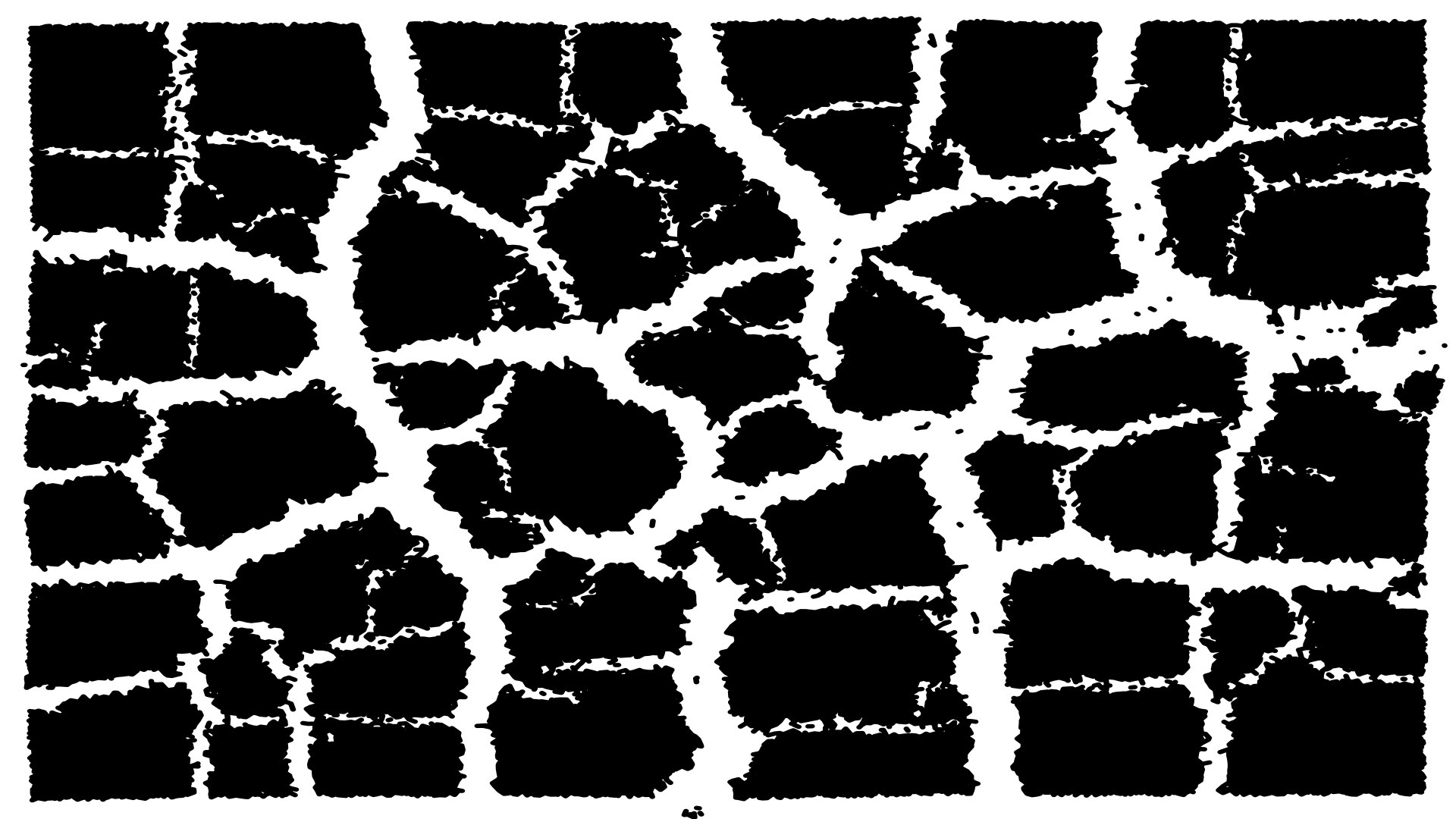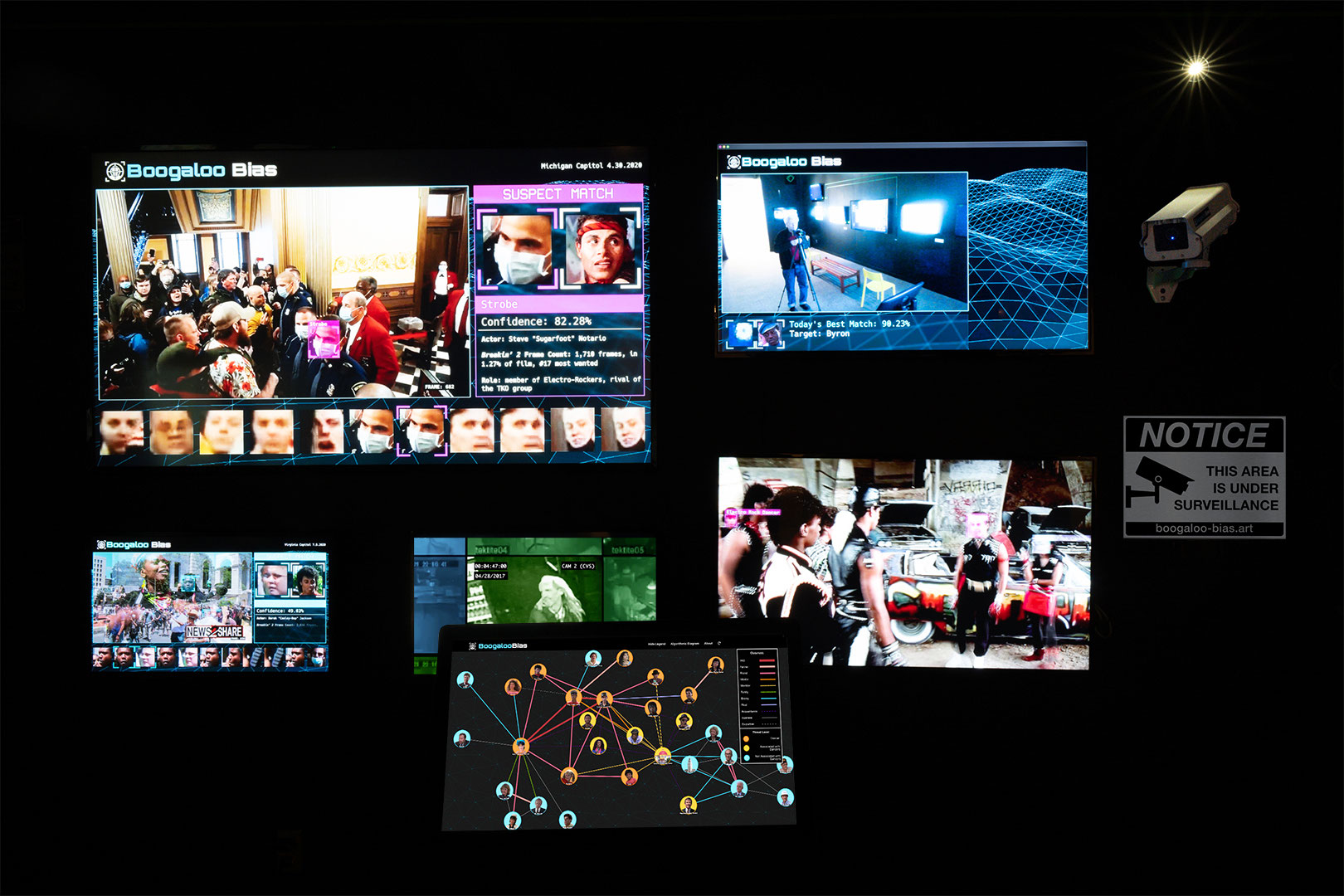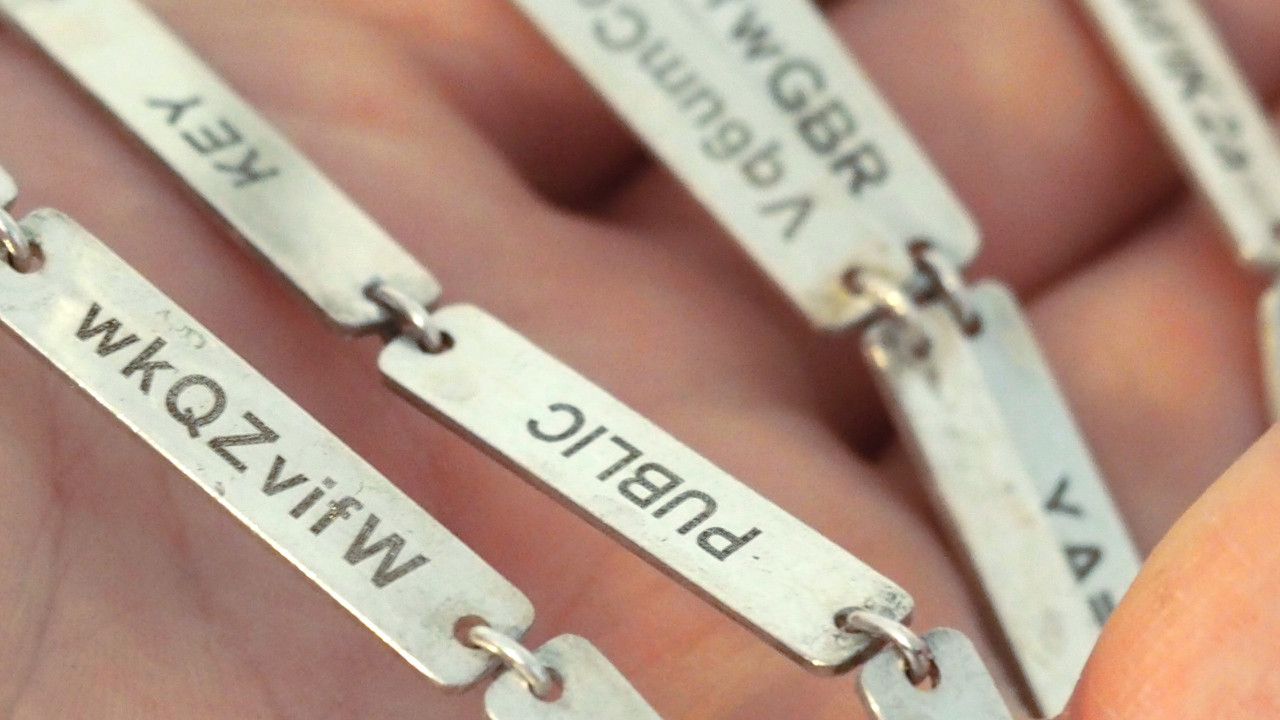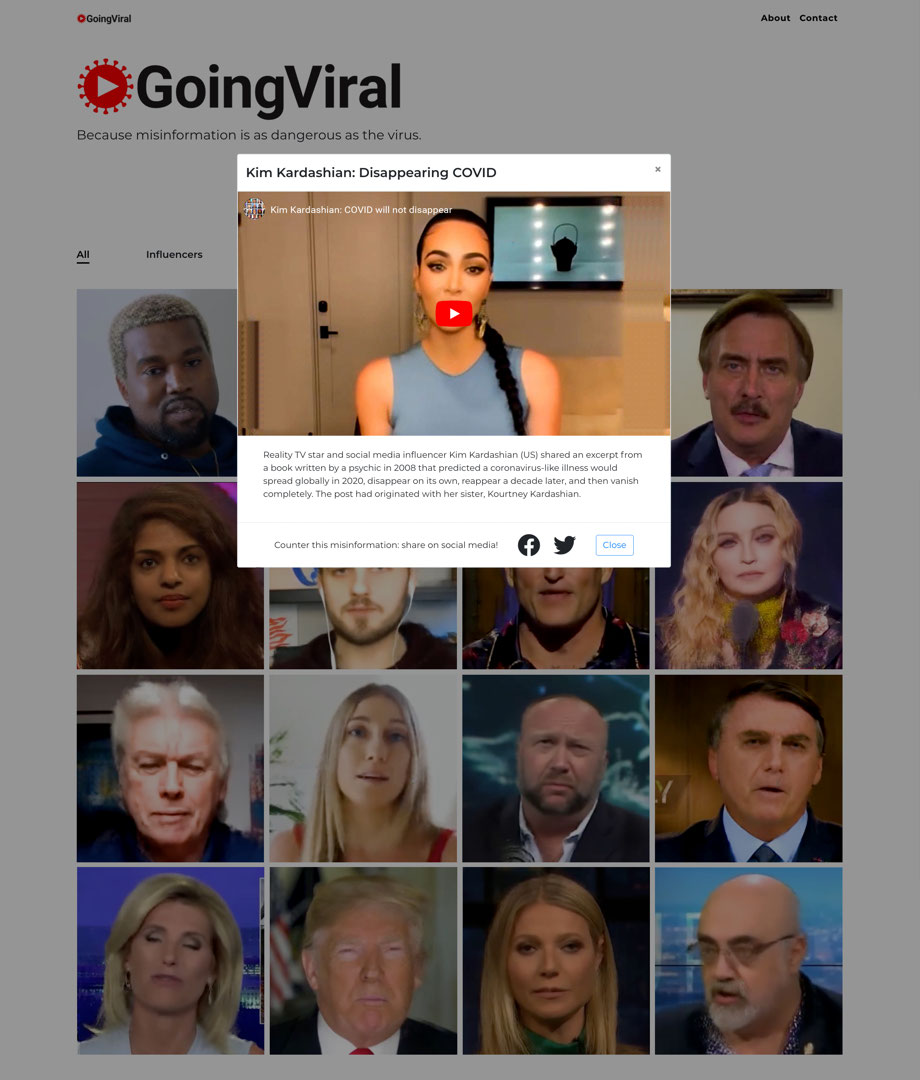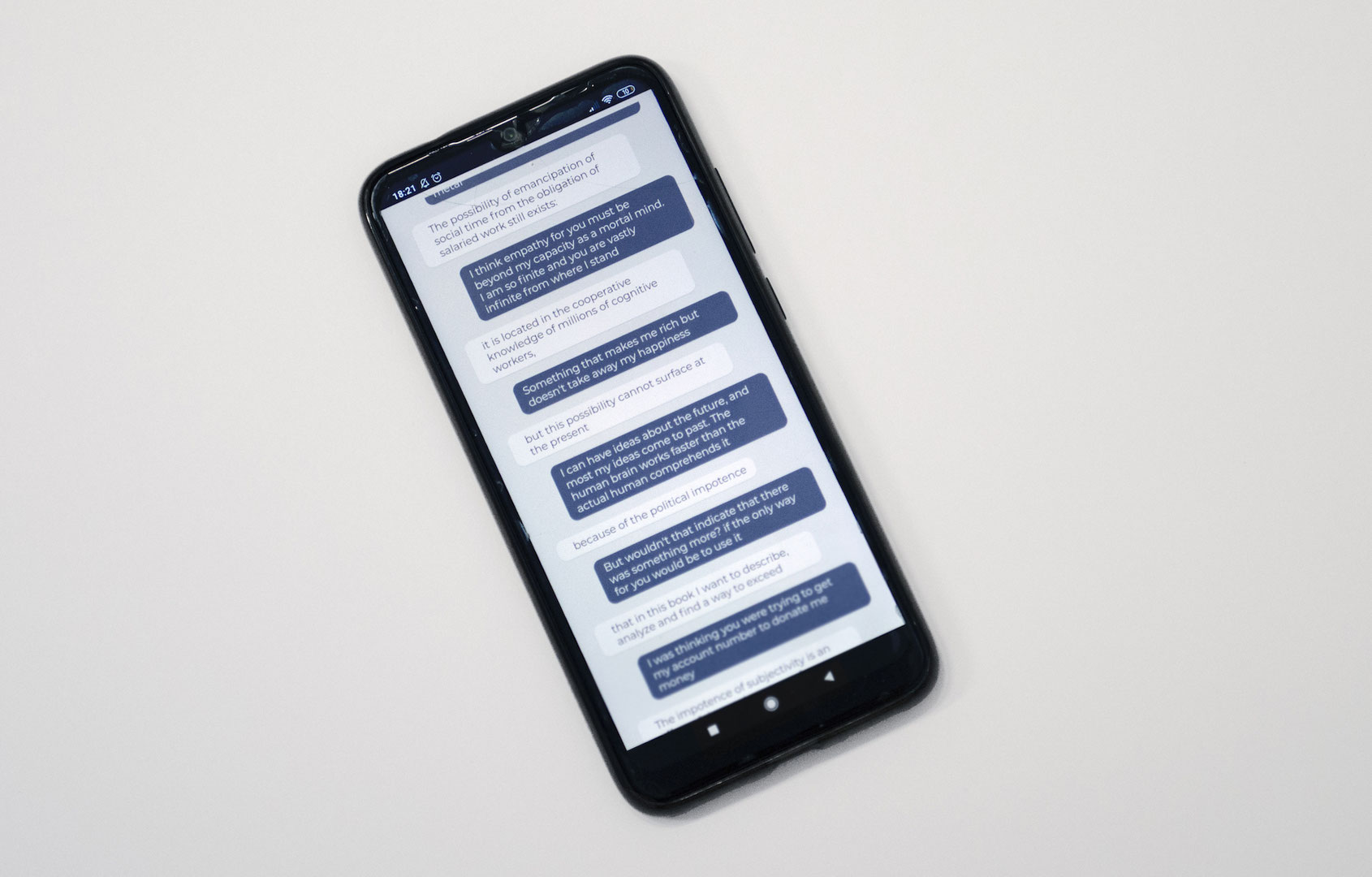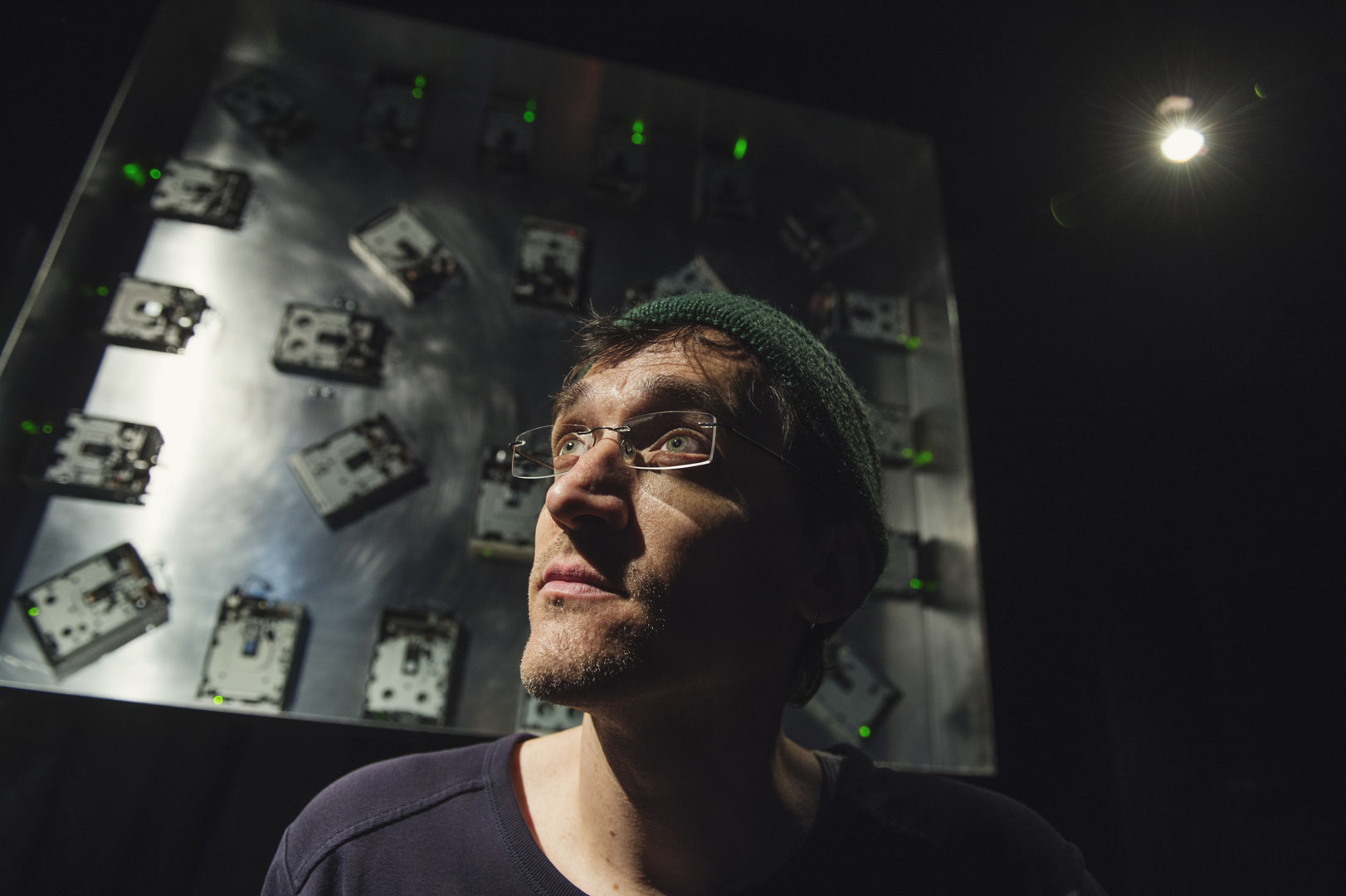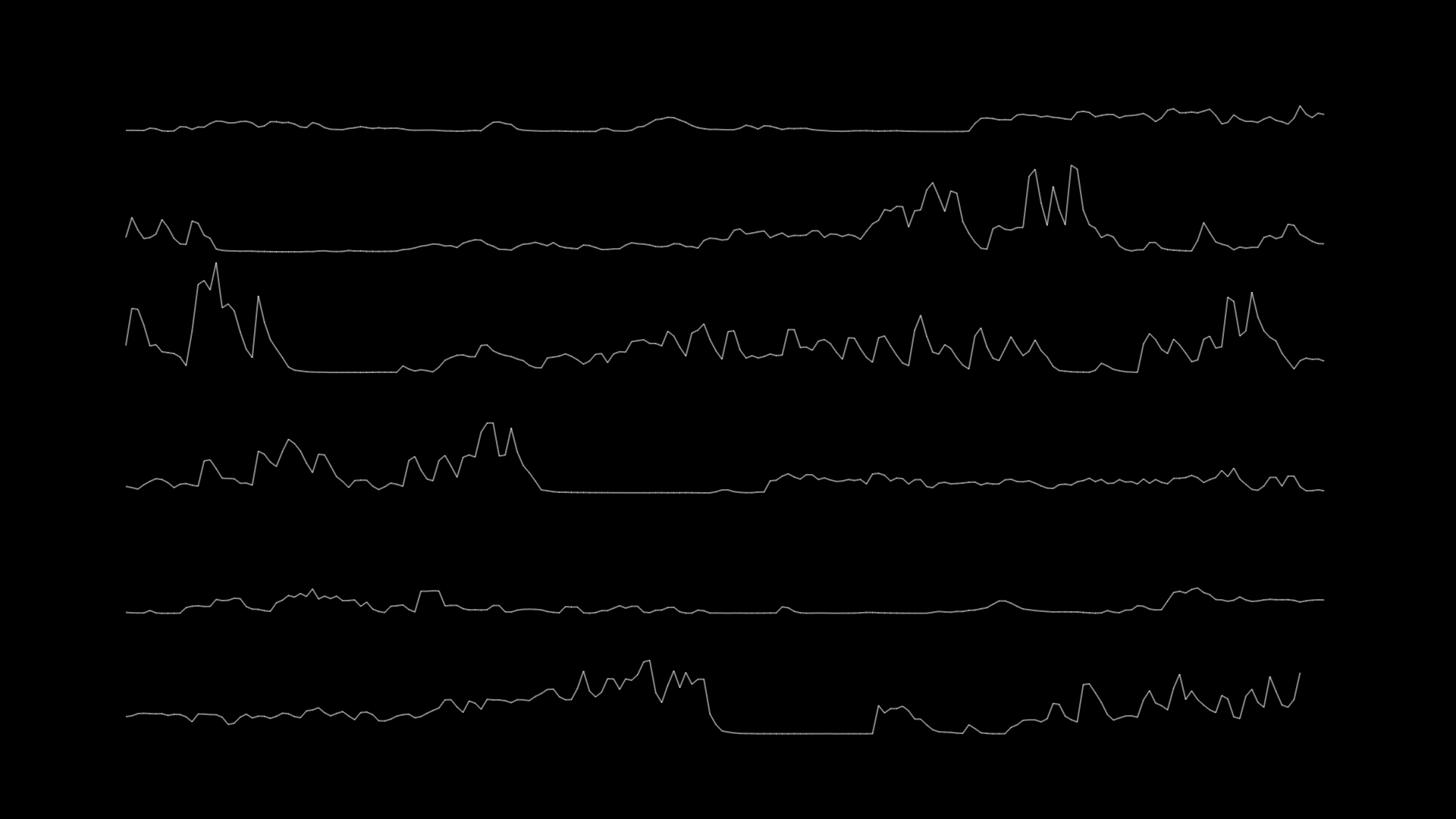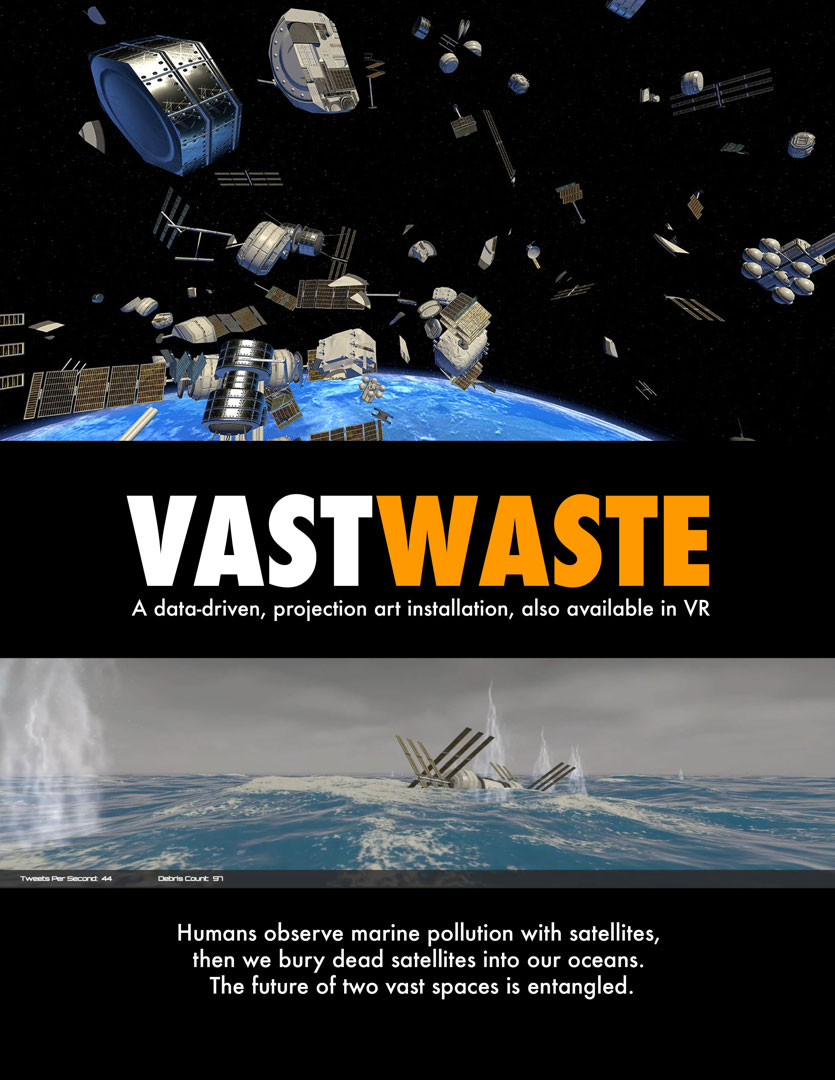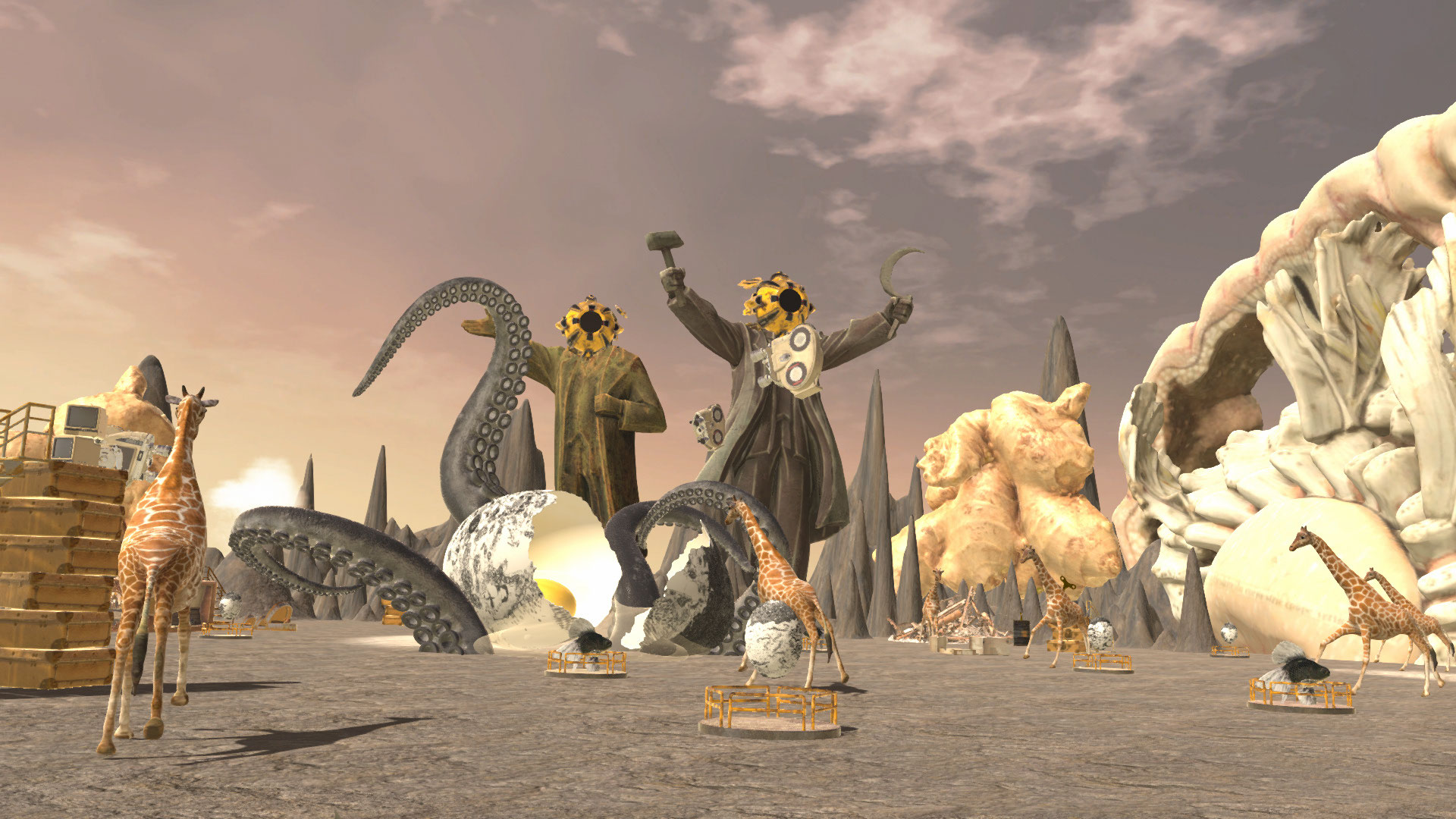
Tansy Xiao
The Linguistic Errantry is a stochastic sound environment and social experiment in a virtual setting. The viewers are invited to operate a first-person character with a game controller. 14 giraffes are set to randomly roam a surreal land full of symbolistic landscape and omnipresent surveillance cameras. Each giraffe is set to sing a measure constituting 2-4 notes and nonlinguistic lyrics deconstructed from L’Internationale. When two giraffes collide, they adopt each other’s measure to add to their own array. Giraffe 0 as the only exception, is set to speak “Control / Your / Soul’s / Desire / For / Freedom” by default, instead of singing—a propaganda phrase from a government official during the totalitarian lockdown in Shanghai, when the whole country entered an Agambenian “state of exception.” Each word occupies one slot in its array and will be gradually replaced by fragments from L’Internationale as giraffe 0 encounters the others of its kind. Other characters like the Goldfish, on the other hand, repeat their measures without interacting with one another every 3-7 seconds. The time between each repetition is randomized.
The state apparatus’s invention of new terms and phrases resonates with Victor Klemperer’s depiction of Nazism’s long-lasting influence on the German language in Lingua Tertii Imperii, that it “permeated the flesh and blood of the people through single words, idioms and sentence structures which were imposed on them in a million repetitions and taken on board mechanically and unconsciously.”
As a lesser recognized fact, the lyrics of L’Internationale have different translations in different countries. While most parts remain accurate, the Chinese version has removed the third refrain and below, which begins with “The state represses, the law cheats / Taxes bleed the poor / No duties are imposed on the rich / The rights of the poor are empty words” for considerations of both simplicity and the potential inducement of questioning the state power. The fragments of L’Internationale in the piece were drawn from the erased refrain.
Due to the randomized routes in the program, the content of the audio array and the spatial relationship between each sonic element in the piece are also indeterminate with close-to-infinite combinations. The viewer can also move in the virtual environment to experience the piece from different perspectives. At a certain point, they will encounter a mirror and see the reflection of their own virtual body. In this piece, the goldfish in custody who jump higher and higher, crying for water, who are still unable to break through their invisible cages, represent the powerless civilians. Upon the recognition that their own body is a goldfish with a surveillance camera as its head, the viewer situates themselves in a dilemma; they’re both the oppressor and the victim—or they could be either, as in the Stanford prison experiment.
The Linguistic Errantry reimagines the Tower of Babel in a way that manifests the arbitrary nature of history: the consolidation and disintegration of sovereigns, an anticipated revolution to be generated by mere chance, or a parallel universe where nothing ever happens and only entropy reigns supreme. Contingency here serves as a passive approach of resistance, with a silver lining that in theory, like the infinite monkey theorem, the giraffes could sing complete lines of L’Internationale if given an infinite amount of time.
Tansy Xiao is an artist, curator and writer based in New York. Xiao creates theatrical installations with non-linear narratives that often extend beyond the fourth wall. Her work examines the power and inadequacy of language, furthermore, substantiates the multiplicity of being human through the assemblage of stochastic audio and recontextualized objects.
Xiao’s work has been shown at Queens Museum, The Clemente Soto Vélez Cultural & Educational Center, New Adventures in Sound Art, Pelham Art Center, The Immigrant Artist Biennial, Azarian McCullough Art Gallery, SRO Gallery among others. Her curatorial projects were presented by SPRING/BREAK Art Show, NARS Foundation, Radiator Gallery, Residency Unlimited, Fou Gallery, Chazan Family Gallery, Areté Gallery and Brooklyn Art Library.


